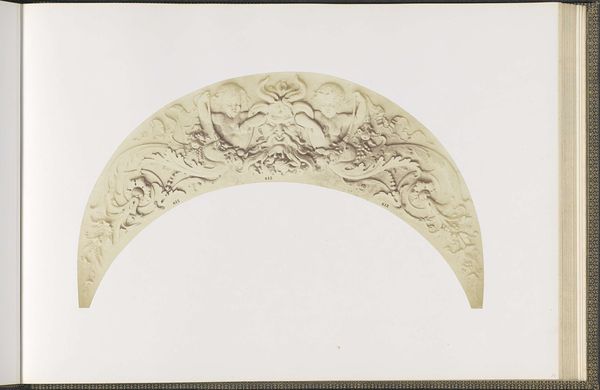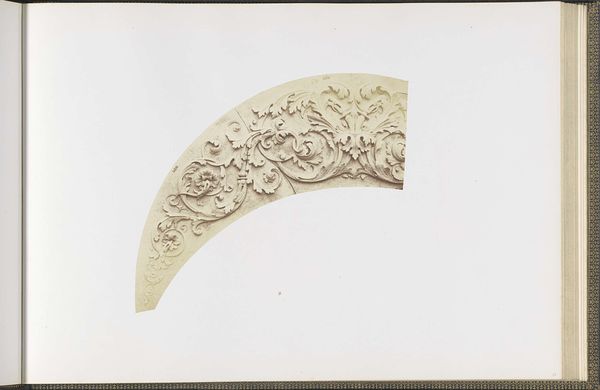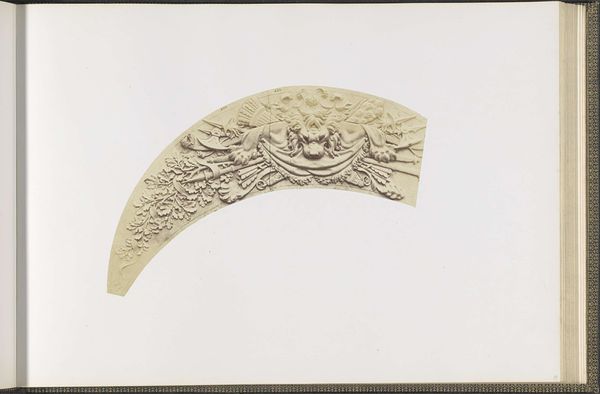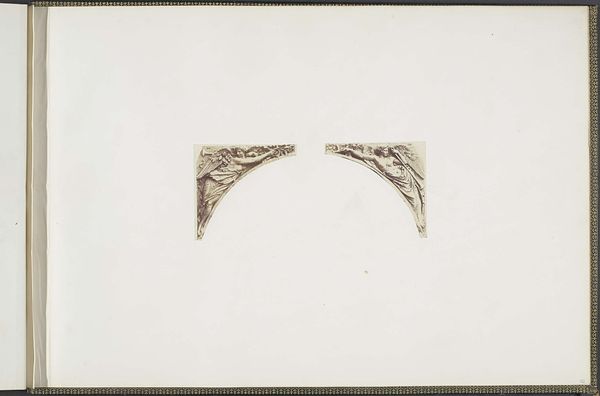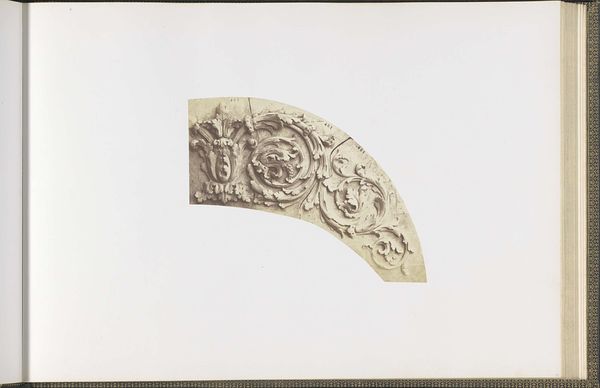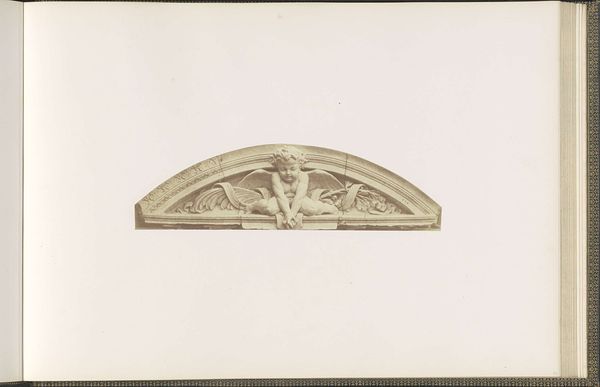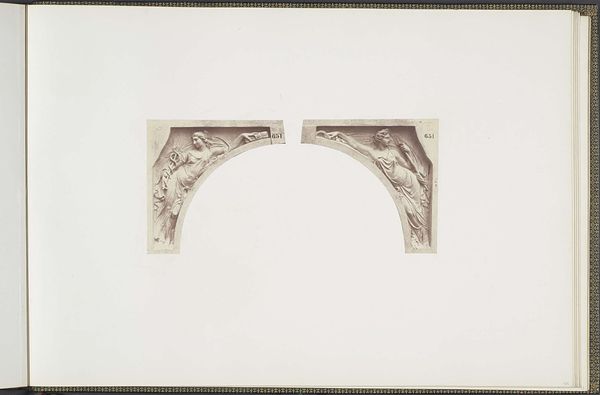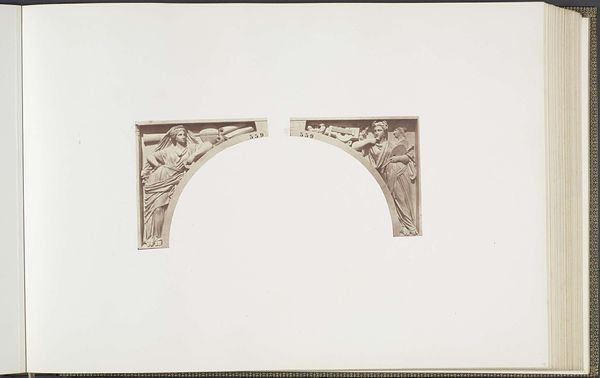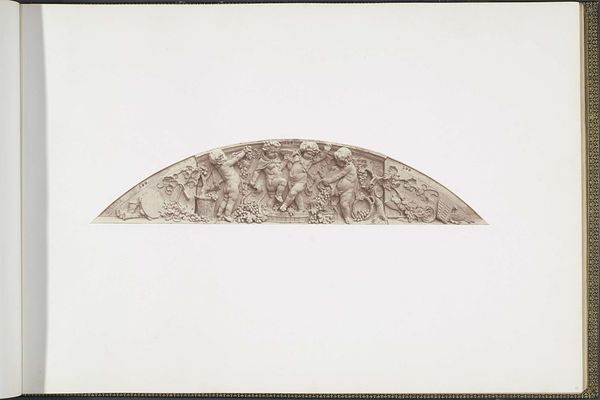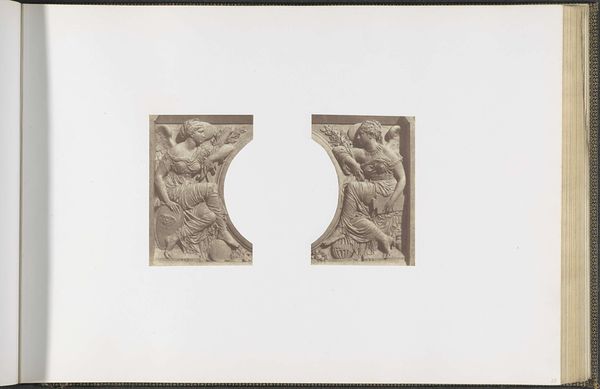
Gipsmodel voor een gewelfversiering van het Palais du Louvre door Pierre Edouard Charrier c. 1855 - 1857
0:00
0:00
edouardbaldus
Rijksmuseum
print, relief, photography
#
neoclacissism
# print
#
relief
#
photography
Dimensions: height 378 mm, width 556 mm
Copyright: Rijks Museum: Open Domain
Curator: Here we have a photographic print showing a plaster model for a vault decoration, envisioned for the Palais du Louvre by Pierre Edouard Charrier, dating from about 1855 to 1857. The photographer is Edouard Baldus. Editor: It strikes me as ethereal—a whisper of a grand idea. It's incomplete, a fragment, yet its delicate floral patterns and figures evoke a sense of romantic grandeur. I can almost hear the echo of classical ideals trying to burst through. Curator: Precisely! The piece reveals a fascinating intersection: the ambition of Neoclassicism attempting to redefine civic space, and early photographic methods documenting these grand projects. Editor: How interesting that they felt photography was the medium of choice to document it instead of a drawing. But, photographing a plaster model does seem particularly…clever. What’s lost and gained in translating sculpture into two dimensions like that? Curator: Baldus was prolific in documenting French architectural projects of the mid-19th century, often commissioned by the state. These images, however, were often intended as reference material rather than artworks in themselves. Think about it: the politics of imagery shaping our understanding of progress. The medium influences perception and posterity, and its function here tells as much about itself as the image itself. Editor: And thinking about the space where that vault decoration was supposed to go– all those curves and details must have created the illusion of light filtering from above. Its almost like the photography translates the sculpture back into the architecture for the viewer to experience in a new form. Curator: Precisely! The print exists as a tangible piece of architectural dreaming. Baldus allows us access to the process and scale, frozen in time through this delicate photograph. It speaks to not just one creative endeavour, but the interplay of vision, craft and representation itself. Editor: In that sense, it’s a double reflection. A document of something never realized, and yet…it allows us to glimpse both Charrier and Baldus, almost collaborators, frozen in this ephemeral moment. A fleeting conversation across time.
Comments
No comments
Be the first to comment and join the conversation on the ultimate creative platform.
